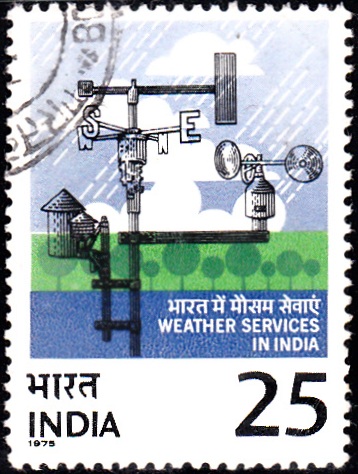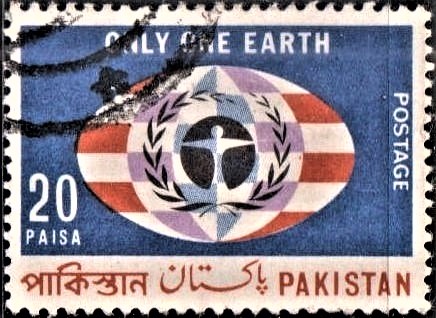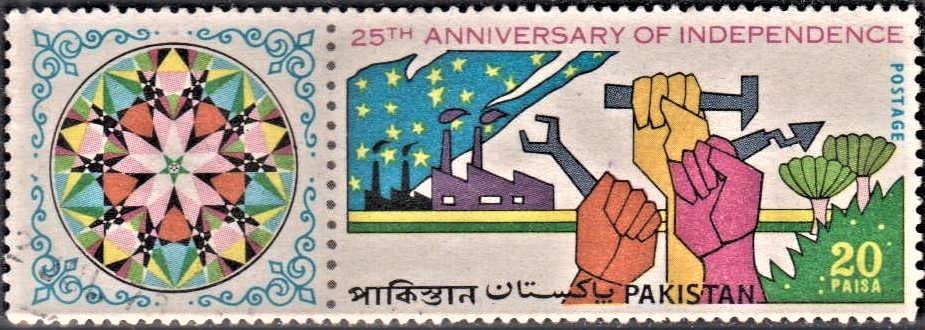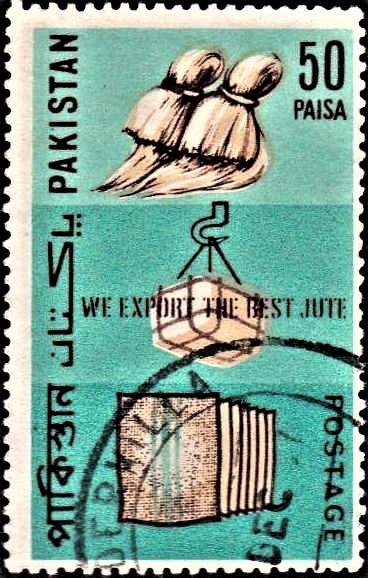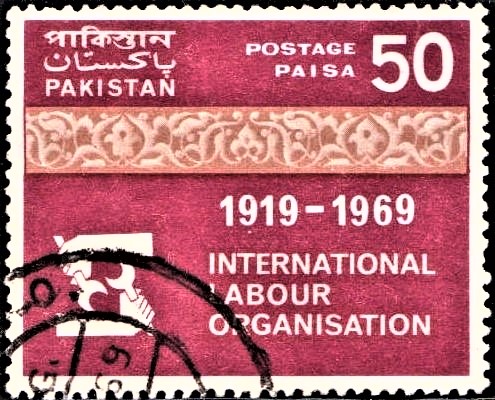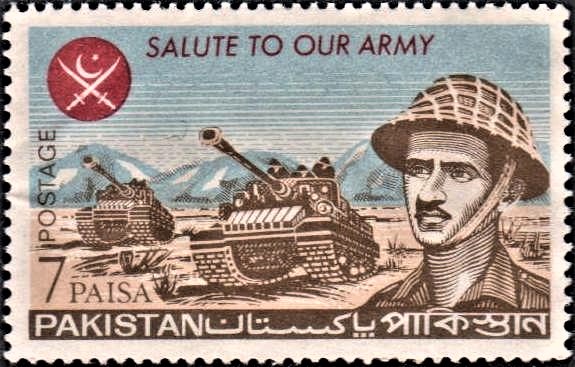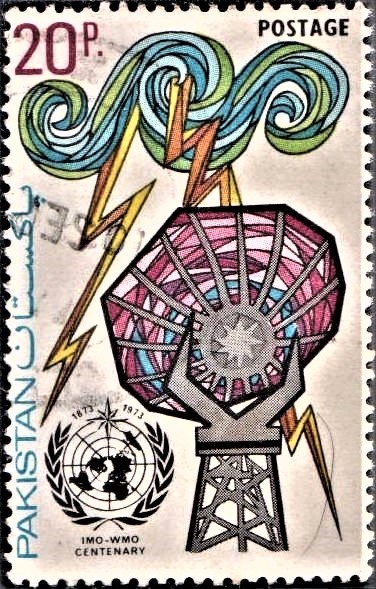
Pakistan on International Meteorological Organization
A commemorative postage stamp on the Centenary of the World Meteorological Organisation (WMO) :
 Issued by Pakistan
Issued by Pakistan
Issued on Mar 23, 1973
Issued for : To commemorate the centenary of IMO/WMO, the Pakistan Post Office is issuing a postage stamp of 20 Paisa denomination on the 23rd March, 1973.
Design : The stamp is vertical in format. The elements of Meteorology i.e. cloud, lightning and Radar constitute the subject of the design. The cloud is shown in abstract form at the top in blue and green colours with two bolts of lightning in yellow and orange colours shooting through it towards left and right side. The radar, also in abstract form is shown at the right side in red, blue and grey colours. The I.M.O./W.M.O. emblem in black colour appears in the lower left corner beside the radar. The denomination “20-Paisa” in red colour and the word “Postage” in black appear at top left and right corner respectively. The word “Pakistan” in Urdu and English in blue colour is placed in vertical position at the left side of the stamp.
Type : Stamp, Postal Used
Denomination : 20 Paisa
Colour : Red – Turquoish, Blue, Yellow – Black
Size of stamp : 30.7 x 49.2 m.m.
Size of print : 27.7 x 46.2 m.m.
Perforation gauge : 13 x 13 (C)
Quantity printed : 7,00,000
Number of Stamps in each sheet : 50
Process of Printing : Litho Offset
Printers : The Pakistan Security Printing Corporation Limited Karachi
About :
- The World Meteorological Organization is a Specialised Agency of the United Nations, created to coordinate, standardise and improve the services rendered by meteorology throughout the World to various human activities. Its members include 140 countries.
- The first effort towards international collaboration in meteorology was made in 1853, when a meeting of sea going nations drew up a programme of weather observations over the oceans to contribute to the safety of life at sea. To organize the necessary collaboration in making and collecting weather observations not only at sea but also on land, the International Meteorological Organization (IMO) was established in 1873 by the Directors of National Weather Services. During the present century, the birth and development of aviation created a new need for detailed weather information along air routes and at aerodromes.
- Consequent on the creation of the United Nations, the Conference of Directors of National Meteorological Services which met at Washington in 1947, adopted the World Meteorological Convention establishing a new organization founded on a formal agreement between governments. This Convention was ratified by a large number of States and in 1951 the new World Meteorological Organization (WMO) started its activities, the former organization having been dissolved. In December, 1951, the General Assembly of the United Nations approved an agreement between the United Nations and the World Meteorological Organization by which the latter was recognized as one of its Specialised Agencies.
- PROGRAMME: The Organization’s programme included assistance to member countries in developing their water resources, participation in tropical research, assistance in world-wide or regional deficiencies in meteorology, weather forecasting for agriculture, international comparison of meteorological instruments and publication of a wide variety of international manuals and technical studies. World Meteorological Organization plays a very active role in the United Nations programme of technical co-operation and assistance towards economic development in the form of advisory experts, training, equipment etc.
- PUBLIC SERVICE: One of the purposes of meteorology is to instruct, warn and advise people about weather, particularly, its adverse conditions, and thus help prevent the devastation caused by it. However, issuing weather forecasts and warnings is not the only contribution made by meteorology to the welfare of man.


